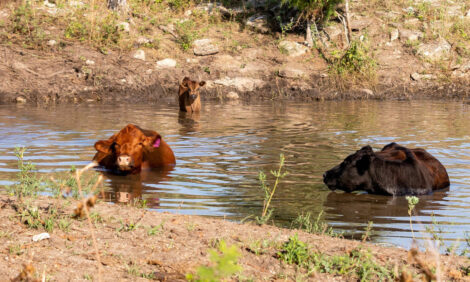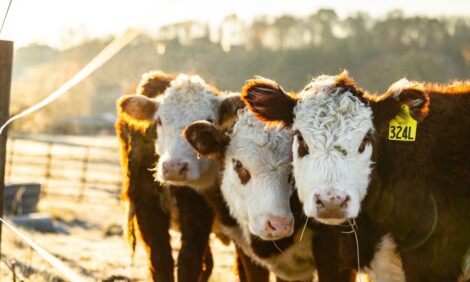



How to Control Liver Fluke
Following European Commission changes to the withdrawal period for flukicides in cows, independent UK consultancy, ADAS, has issued the latest advice on how to beat Fasciola Hepatica - the flukeworm.Liver flukes are part of the Class of animals called Trematodes and are one of the group of flatworms (Platyhelminths), write ADAS experts.
Those of veterinary interest exhibit a complex life cycle with at least two different hosts being affected during the development of the infection. They are also very important in human medicine with schistosomiasis and bilharzia still being serious disease risks in many parts of the world.
As the name suggests the adult fluke lives in the liver causing damage and ill thrift. In the UK the most important liver fluke is Fasciola hepatica, usually just known as liver fluke. In the west of Scotland a second species known as the lancet fluke (Dicrocoelium dendriticum) is also found.
In addition to liver fluke, the prevalence of rumen flukes (Paramphistomum cervi) has increased markedly over the last few years. They do not generally cause significant disease unless present in very large numbers, but their eggs are similar to those of the liver fluke and this can cause problems with diagnosis.
They use the same mud snail as an intermediate host and the increase in incidence comes at the same time as an increase in liver fluke problems. The recent spate of wet summers may have led to increased survival of these snails.
*
"Liver fluke tend to be a problem in high rainfall areas of the west of Great Britain and in Ireland, but can occur anywhere that suitable wet conditions occur"
The liver fluke life cycle starts with eggs being laid by hermaphrodite adult flukes which inhabit the bile ducts of many species, but in the UK mainly occur in sheep and cattle. Adult fluke are quite large (up to 3 x 1.5 cm).
They feed on secretions of blood and serum produced from the effect of striping away the epithelium of the bile ducts. Eggs are passed into the gut with the bile flow, pass out with the faeces and hatch in the environment to form miracidia which penetrate into a mud snail. In the snail they develop and multiply and eventually leave it as motile cercaria.
Within a couple of hours these attach themselves to blades of grass and then encyst to form metacercaria.
The earlier development stages require a very wet environment for both snail and fluke survival, but metacercaria can survive drying for some weeks on the grass stem as it grows. Metacercaria are eaten by grazing livestock and hatch, penetrating the gut wall and passing into the peritoneal cavity where they migrate to and penetrate the liver.
They move through the liver for about six weeks and eventually enter the bile ducts where they mature into adults, thus completing the cycle.
Control of the disease is best undertaken by draining wet areas of pasture and/or fencing them off, however, this is often not a practical solution. Liver fluke tend to be a problem in high rainfall areas of the west of Great Britain and in Ireland, but can occur anywhere that suitable wet conditions occur. In these areas where fluke is a problem regular treatment of livestock with an appropriate anthelmintic is necessary.
Treatment raises a number of issues. Firstly whilst it is relatively easy to kill adult fluke in the bile duct by making use of the liver’s ability to concentrate drugs in the bile as a method of excretion, the most damaging stage is the migrating immature fluke in the liver tissue. This causes severe fibrosis of the liver and reduces its capacity to function.
There are also relatively few registered active ingredients, many of which are very old and many have long meat withholding periods. Triclabendazole has been the most widely used product in recent years as it is active against both adult and immature fluke. This extensive use has resulted in reported cases of triclabendazole resistance developing.
The effect of liver fluke on milk yield in dairy cattle can be dramatic as the adult fluke causes large amounts of nutrients to be lost to the animal from loss with the bile flow. Recent wet summers have exacerbated the situation with exposure to fluke of previously unexposed herds. This resulted in increased use of flukicides in dairy cows and a re-examination of data pertaining to milk residues in dairy cattle.
The European Commission recently made a decision to drastically curtail the use of some products used to treat dairy cows in the dry period after concern that trace residues of some of the anthelmintic drugs used to control fluke might be found in the milk after the cattle calved.
This was also seen as a potential issue in the treatment of pregnant heifers prior to their first calving in some cases. Currently only some formulations of oxyclozanide and albendazole can be used in cows lactating for human consumption (with a milk withholding period).
These products can also be used in the dry period and for heifers if the milk withholding period is complied with. Unfortunately neither of these products has adequate activity against very immature flukes. Dairy cows can also be treated in the very early dry period with some formulations of clorsulon, closantel and one formulation of triclabendazole, but many products currently cannot be used in this way.
Meanwhile some products have been contraindicated for use in cattle of any age intended to produce milk for human consumption. Use of flukicides in milking sheep and young sheep intended to produce milk for human consumption is also severely curtailed. The restrictions have been put in place as it is considered that the available data on residue depletion in milk is too weak or old to stand modern scrutiny and further residue studies in dairy cattle may need to be undertaken.
In many cases submission of new milk residue depletion data may result in the establishment of withholding periods. ADAS has considerable experience in both working with liver fluke and carrying out such compliant milk residue depletion studies in cattle and sheep.


